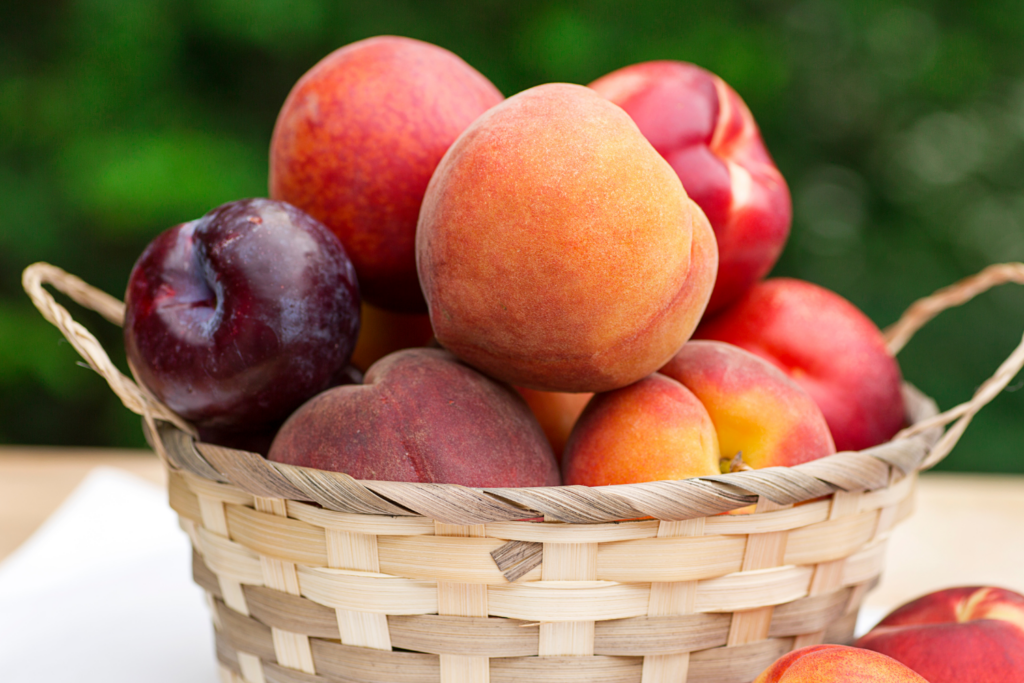Food of the Month – Stone Fruit

Stone fruit, or drupes, include peaches, nectarines, plums, apricots, cherries, almonds and their hybrids. Thought to have originated in the far East and brought westward on the silk road and other trade routes, these sweet fruits are now found and enjoyed globally. Cherries were particularly revered by Chinese noblemen and Roman elite.
The US state of Georgia is often assumed to be the top producer of peaches, but according to the USDA, the top four producers are California, South Carolina, Georgia, and New Jersey. Washington state comes in seventh with production concentrated east of the Cascade Mountain range.
Nutrition: Stone fruits are high in dietary fiber, potassium, vitamin A and vitamin C, which support skin health and the immune system. White peaches and nectarines have a lower acid content than the yellow variety, giving them the perception of being sweeter. Stone fruits are naturally high in sugar alcohols, so overconsuming these foods can cause urgent loose stools similar to overconsuming diabetic candy or sugar free gum. Individuals with IBS may have a lower tolerance to stone fruits.
Storage Tips: Do not refrigerate stone fruits, as they will get wrinkly and mealy in texture. Cherries must be picked ripe and have the shortest shelf life of all the drupes. Choose firm stone fruits and place them in a paper bag stem side down at room temperature until they reach preferred ripeness. When purchasing large quantities of stone fruit, placing some in a paper bag and leaving others in the open air at room temperature ensures they do not all ripen at once.
Fun Facts:
- Amaretto and noyaux are made from stone fruit kernels, often a mix of almond and apricot.
- Most stone fruits will serve up six to nine percent of your daily potassium needs
- Cherries and plums are rich in anthocyanins, disease-fighting flavonoids found in dark red, purple and blue fruits, and veggies.
- Prunes are simply dried French freestone plums.
- Dried apricots are often treated with sulfur gas to retain their orange color; left untreated, dried apricots turn brown with oxidization.
FYI: For easier slicing, choose freestone over clingstone varieties. Freestone do not “cling” to the pit.
Click here for any easy Nectarine Caprese Salad recipe that will impress at any potluck.
